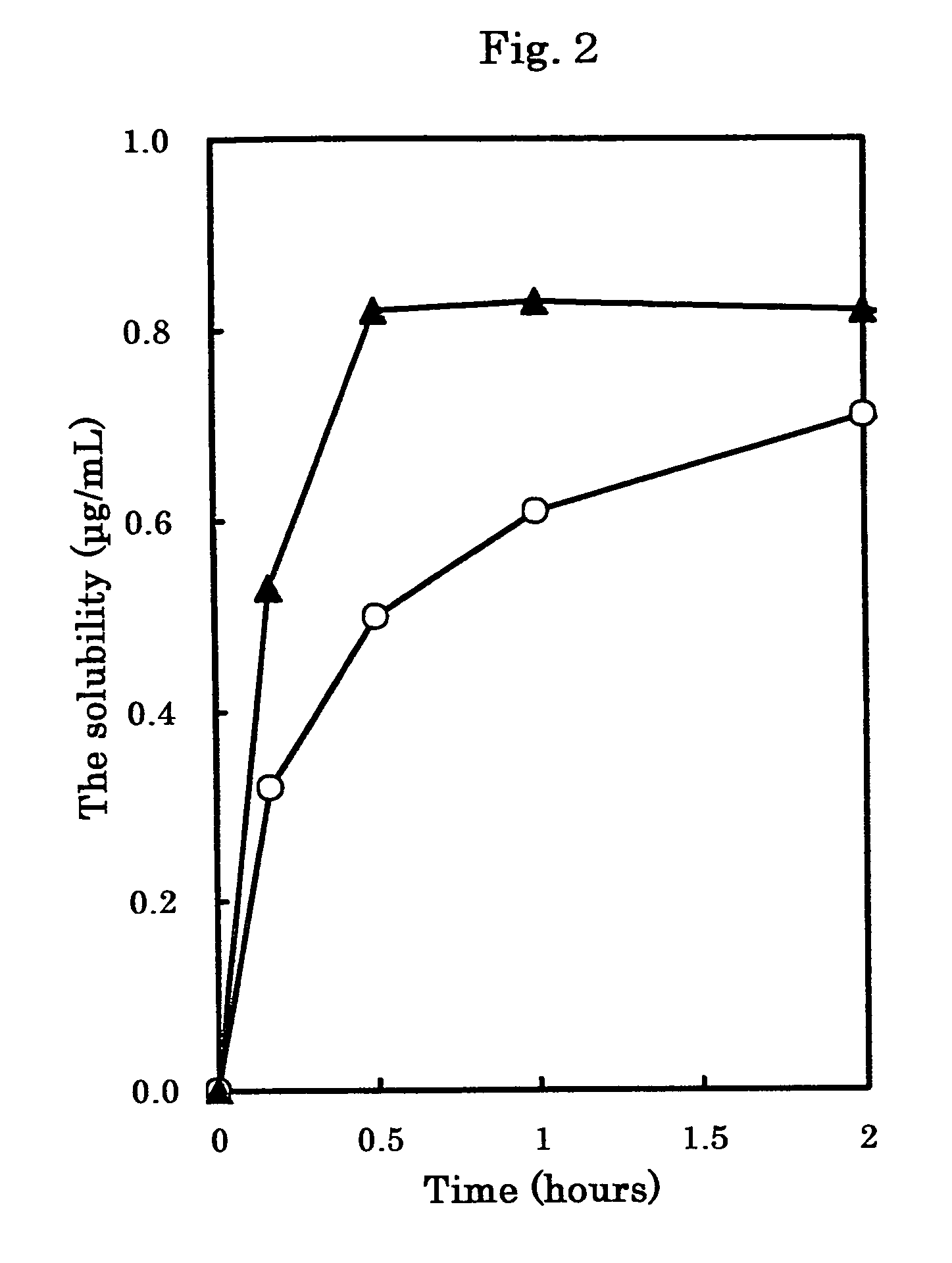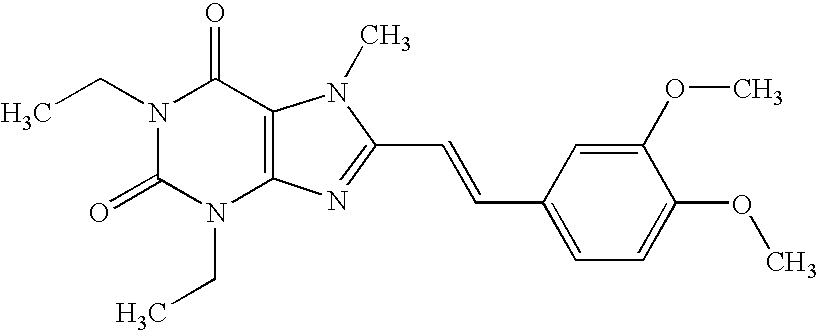Microcrystal
a micro-crystal and micro-crystal technology, applied in the field of micro-crystals, can solve the problems of low bioavailability of drugs having low solubility in water, and achieve the effect of improving absorption
- Summary
- Abstract
- Description
- Claims
- Application Information
AI Technical Summary
Benefits of technology
Problems solved by technology
Method used
Image
Examples
example 1
[0084]“Crystals of Compound 1” (1 kg) was poured into a jet mill (PJMI-1.5; manufactured by Nippon Newmatic) and pulverized under pressure of 0.4 MPa while feeding at rate of 50 g / minute to obtain “microcrystals of Compound 1” (950 g) having an average particle size of 24 μm. Incidentally, the average particle size was measured by an image analyzer (Image Command 5098; manufactured by Olympus Optical; wet method).
example 2
[0085]Unpulverized “crystals of Compound 1” (Crystals A; an average particle size of the crystals=167 μm) was obtained by the process described in Japanese Published Unexamined Patent Application No. 040,652 / 97. The above-described Crystals A was pulverized by a jet mill (PJMI-1.5; manufactured by Nippon Neamatic) under pressure of 0.4 MPa while feeding at a rate of 50 g / minute to obtain “microcrystals of Compound 1” (Microcrystals A; a particle size of the microcrystals D100=8.7 μm which means that 100% of the particles are 8.7 μm or less; a crystallinity: 84.6%). Incidentally, the average particle size was measured by an image analyzer (Image Command 5098; manufactured by Olympus Optical; wet method).
example 3
[0086]Unpulverized “crystals of Compound 1” (Crystals B; an average particle size of the crystals=181 μm; a crystallinity: 71.6%) was obtained by the process described in Japanese Published Unexamined Patent Application No. 040,652 / 97. The above-described Crystals B was pulverized by a jet mill (PJM-100SP; manufactured by Nippon Newmatic) under pressure of 0.25 MPa while feeding at a rate of 50 g / minute to obtain “microcrystals of Compound 1” (Microcrystals B; an average particle size of the crystals: 11 μM; a crystallinity: 67.3%). Incidentally, the average particle size was measured by an image analyzer (Luzex® AP; manufactured by Nicole).
PUM
| Property | Measurement | Unit |
|---|---|---|
| particle size | aaaaa | aaaaa |
| particle size | aaaaa | aaaaa |
| diameter | aaaaa | aaaaa |
Abstract
Description
Claims
Application Information
 Login to View More
Login to View More - R&D
- Intellectual Property
- Life Sciences
- Materials
- Tech Scout
- Unparalleled Data Quality
- Higher Quality Content
- 60% Fewer Hallucinations
Browse by: Latest US Patents, China's latest patents, Technical Efficacy Thesaurus, Application Domain, Technology Topic, Popular Technical Reports.
© 2025 PatSnap. All rights reserved.Legal|Privacy policy|Modern Slavery Act Transparency Statement|Sitemap|About US| Contact US: help@patsnap.com



